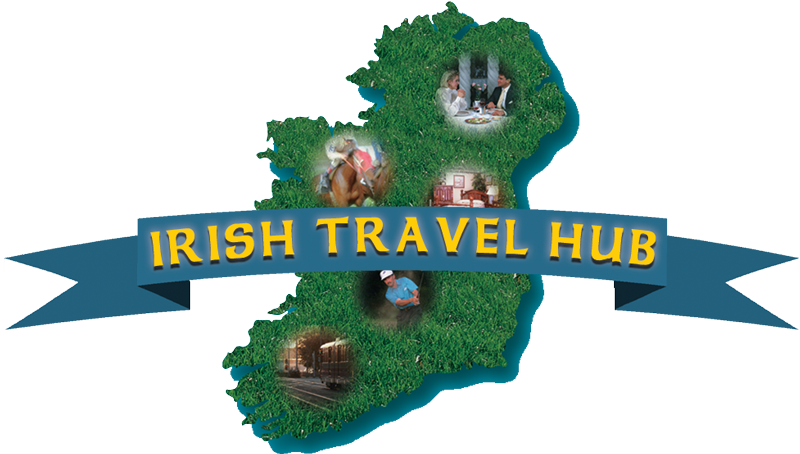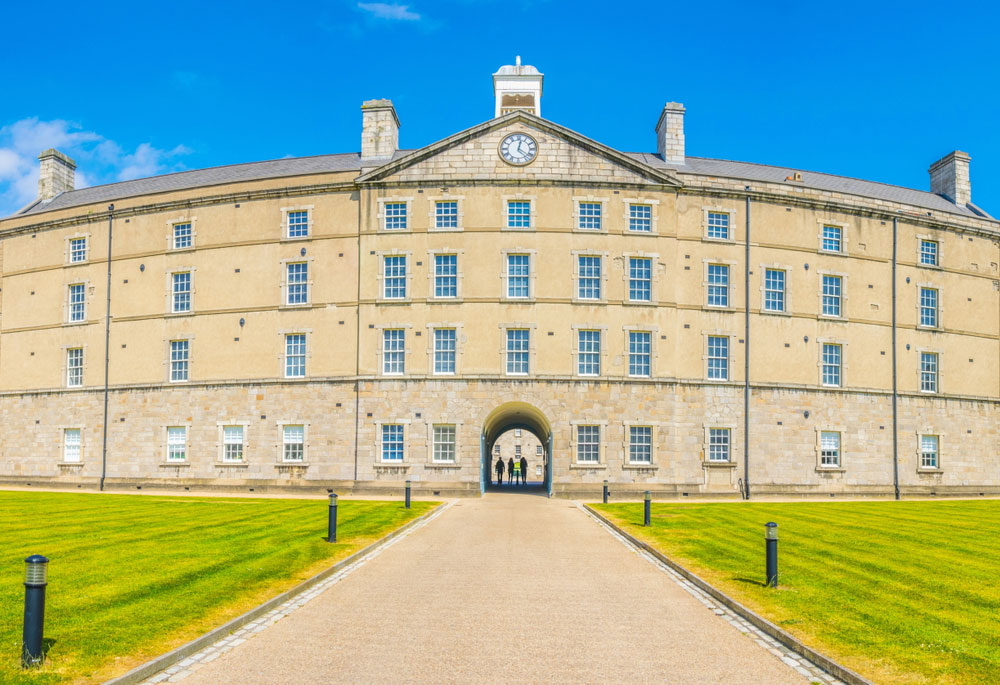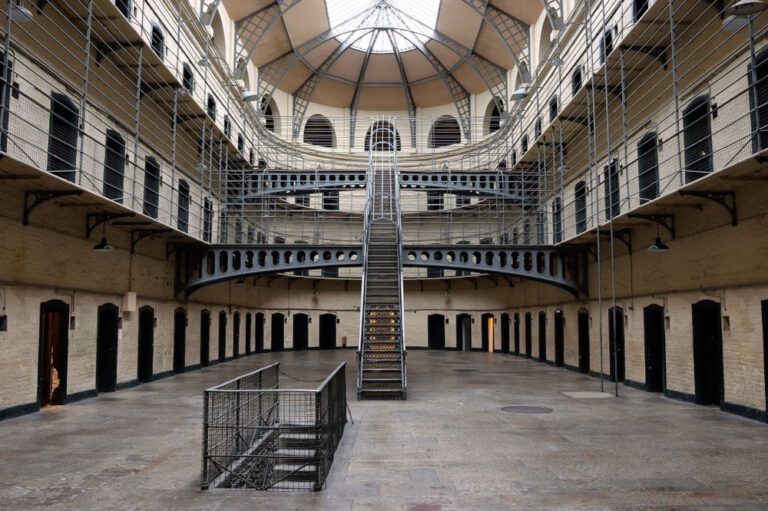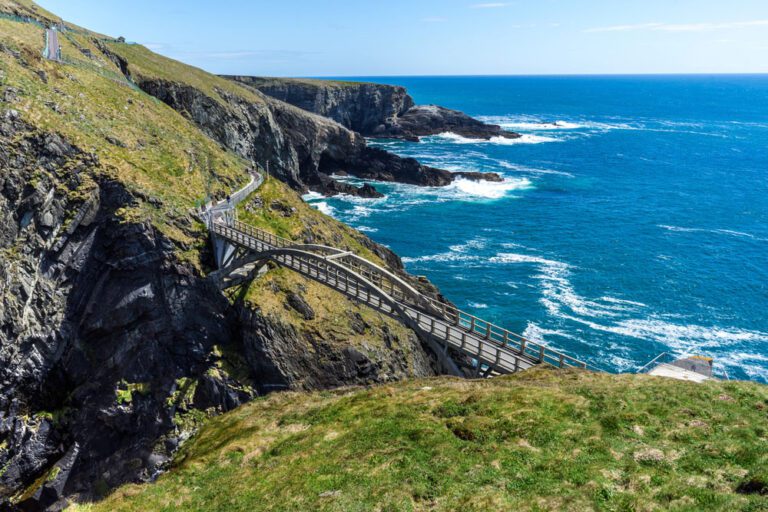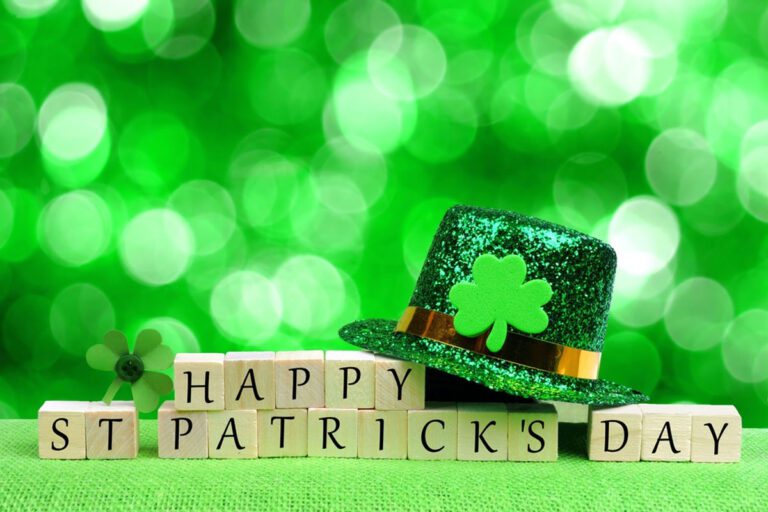A Glimpse into History
When you walk through the museum’s great entryway, you are immediately transported to a world where time is unraveling its mysteries. It’s a location where ancient relics tell stories of warriors and monarchs, intricate works of art reveal a nation’s soul, and the natural wonders of this enthralling land are meticulously conserved.
The sights, sounds, and scents of Ireland’s history stimulate your senses as you walk through the ancient corridors. The displays invite you to explore archaeology, history, ornamental arts, and natural history, each of which offers a look into the vibrant tapestry of this historic nation.
You’ll be amazed at the ancient artifacts uncovered from burial mounds and boglands in the archaeology section. Intricate Celtic brooches convey tales of workmanship, and mystical stone carvings hint at a spiritual link to the country. These antiques speak eloquently about our forefathers’ inventiveness and artistry, providing a physical link to the Ireland of yesteryear.
The museum, however, does not stop at displaying old items. It also allows you to delve into the history that helped shape modern Ireland. The exhibitions give a vivid picture of the nation’s journey through time, from the challenges of revolt to the victories of independence. Letters, photographs, and personal effects of historical personalities bring history to life, immersing you in the trials and victories of those who fought for Ireland’s identity.
The ornamental arts section emerges like a gallery of wonders as you walk further. Delicate porcelain teacups embellished with delicate shamrocks, delicately crafted silverware carrying the marks of expert silversmiths, and rich textiles woven with stories from centuries past tell of the Irish people’s commitment to preserve their cultural history.
And let us not forget the natural history exhibits, where the fauna and flora of Ireland come alive. Stroll past displays of native birds, marvel at the diversity of insect life, and lose yourself in the magic of preserved flora. Here, Ireland’s natural wonders are celebrated, reminding us of the importance of preserving and cherishing our delicate ecosystems.
Bringing Ancient Artifacts to Light
Step into the museum’s ancient treasures, where time stands still and echoes of bygone periods resound through the hallways. The relics on display here establish a direct link to the lives and cultures that shaped Ireland’s past.
As you explore the displays, you’ll come across ceremonial artefacts that formerly carried spiritual importance. Exquisite golden torcs, carefully carved brooches embellished with elaborate Celtic motifs, and gleaming jewelry that evokes a bygone era of splendor.
Allow your imagination to transport you to the Iron Age, where warriors clad in protective armor wielded their weapons with prowess. The museum’s collection of weapons—swords, spears, and shields—reveal the craftsmanship and artistry of the era. These artifacts not only bear witness to the tumultuous times of conflict but also highlight the importance of bravery and honor in Irish society.
As you progress, you’ll come upon the fascinating realm of ancient Ireland’s burial practices. Be awed by the magnificent stone carvings, delicately woven linens, and hauntingly delicate grave goods. These relics reveal insights into the spiritual beliefs and rituals that surrounded death, shedding light on our forefathers’ care and respect for their gone.
The tour through the museum also demonstrates the impact of foreign cultures on Irish history. The classical grandeur of Roman artifacts reminds us of the ties made between Ireland and the rest of the world. The delicate craftsmanship of Roman jewelry, as well as the fascinating blend of Irish and Roman artistry, demonstrate the cultural exchanges that molded Ireland’s past.
But it’s not simply the magnificent antiques that hold your interest. Everyday things, tools, and utensils reveal much about regular people’s life. A simple wooden comb or stone axe recounts stories of survival, industry, and the eternal yearning for advancement.
You can’t help but feel a great sense of kinship to the people who came before us as you travel through this enthralling world of ancient relics. Their hardships, victories, and everyday lives are inscribed onto each meticulously kept artifact, reminding us of our common past and the Irish spirit’s endurance.

Celebrating Decorative Arts
Step into the museum’s ancient corridors and ready to be wowed by the wonders that greet you. Each piece, from delicate ceramics to elegant silverware, recounts a tale of expert craftsmanship and the aesthetic expressions of the Irish people.
Take a time to appreciate the exquisite beauty of delicate porcelain teacups with elaborate shamrock designs. These stunning works are a monument to Irish ceramicists’ skill, whose precise handiwork has decorated innumerable tea tables, reflecting the soul of Irish hospitality.
As you continue your journey, you will come across glittering silverware that symbolizes the wealth and refinement of Irish society. The exquisite designs, which range from flowing Celtic patterns to precisely engraved scenes, demonstrate the silversmiths’ passion and talent. Whether opulent dining sets or delicate jewelry, these pieces of silverware exemplify the timeless elegance that has come to distinguish Irish craftsmanship.
However, ornamental arts extend beyond pottery and silverware. When you enter the textile gallery, you are welcomed by a riot of colors and textures. The elaborate weavings, delicate lacework, and vivid tapestries that grace the walls will take your breath away. Each thread tells a tale, maintaining Irish textile arts traditions and legacy. These textiles are a monument to the talent and inventiveness of Irish weavers and knitters, ranging from the iconic Aran sweaters with motifs of harsh coastal landscapes to the delicate lacework that speaks of delicacy and elegance.
The decorative arts area also highlights the diverse influences that have shaped Irish design. From opulent Georgian furniture that represents the era’s grandeur to delicate glasswork that mimics the beauty of Waterford Crystal, these pieces represent the blending of styles and influences that has shaped Ireland’s cultural landscape.
You can’t help but be captivated by the brilliance and ingenuity of Ireland’s craftspeople as you lose yourself in this intriguing world of decorative arts. Their creations, created with love and expertise, honor Ireland’s rich heritage and provide a look into the traditions that continue to thrive today.
Discovering the Natural Wonders of Ireland
The sights and sounds of Ireland’s plentiful wildlife greet you as you enter the museum’s natural history department. From soaring birds to scurrying creatures, the exhibits provide an insight into the country’s varied ecosystems.
Native bird displays introduce you to the enchanting sounds that permeate the Irish air. Admire the secretive hen harrier’s magnificent plumage, watch the exquisite flight of the red kite, and listen to the enchanting sounds of the skylark. These winged species are a monument to Ireland’s bird population’s richness and diversity, generating awe and a deep love for the natural world.
Exhibits related to Ireland’s terrestrial and marine biodiversity await further exploration. Discover the enthralling environments that support a diverse range of species, from the elusive red squirrel to the majestic red deer that traverse the Irish countryside. Discover the wonders of Ireland’s beaches, where seals sun themselves on craggy cliffs and joyous dolphins splash through the waves.
But it’s not simply the fauna that catches your eye. Flora exhibitions at the museum highlight the botanical beauties that cover the area. Admire the delicate beauty of natural wildflowers including bright yellow gorse and delicate purple heather. Learn about the significance of Ireland’s peat bogs and their unique plant life, such as the iconic sphagnum moss, which has played an important role in Irish history and culture.
The museum’s natural history area also gives light on Ireland’s geological past. Learn about the formation of the island’s spectacular scenery, from towering cliffs to ancient rock formations. Investigate the geological processes that have sculpted Ireland’s geography and learn about the secrets hiding beneath the surface.
You can’t help but feel amazement and admiration for the beauty that surrounds us as you immerse yourself in the grandeur of Ireland’s natural past. The exhibitions serve as a reminder of the delicate balance that exists between humans and environment, as well as the significance of preserving and protecting these valuable ecosystems for future generations.
We bid farewell to the National Museum of Ireland, a place where Ireland’s cultural and natural heritages intersect. But the spirit of this amazing institution lives on in us, reminding us of the tales, traditions, and natural beauties that make Ireland so unique.
Here are some more famous tourist attractions in County Dublin:
- Guinness Storehouse: A popular attraction for beer lovers, the Guinness Storehouse is a museum and brewery that showcases the history of Guinness and offers tasting experiences.
- Dublin Castle: A historic castle that has served as a fortress, royal residence, and government building over the centuries. It features beautiful gardens and architecture.
- Trinity College: A prestigious university founded in 1592, Trinity College is also home to the famous Book of Kells, an illuminated manuscript dating back to the 9th century.
- St. Patrick’s Cathedral: The largest church in Ireland, St. Patrick’s Cathedral dates back to the 12th century and features stunning Gothic architecture.
- Temple Bar: A lively and vibrant neighborhood filled with pubs, restaurants, and shops. It’s a popular spot for nightlife and entertainment.
- Kilmainham Gaol: A former prison that played a significant role in Irish history, including the 1916 Easter Rising. It’s now a museum that offers guided tours.
- Phoenix Park: One of the largest urban parks in Europe, Phoenix Park is home to Dublin Zoo, the residence of the President of Ireland, and many walking and cycling trails.
- Grafton Street: A famous shopping street in Dublin, Grafton Street is home to many high-end shops, street performers, and restaurants.
- Dublin Zoo: A popular attraction for families, Dublin Zoo is home to over 400 animals from all over the world, including tigers, elephants, and penguins.
Recommended Reading:
- The Guinness Storehouse: A Tour of Ireland’s Most Famous brewery
- A Day in Dublin’s Fair City
- Discovering Trinity College and the Book of Kells, Ireland’s Most Valuable Script.
- Kilmainham Gaol: A Journey through Ireland’s Revolutionary History
- A day at Dublin Zoo: A Tale of Wonder and Delight
- The National Botanic Gardens: A Guide to Ireland’s Lush Greenery and Floral Beauty
Helpful Resources:
